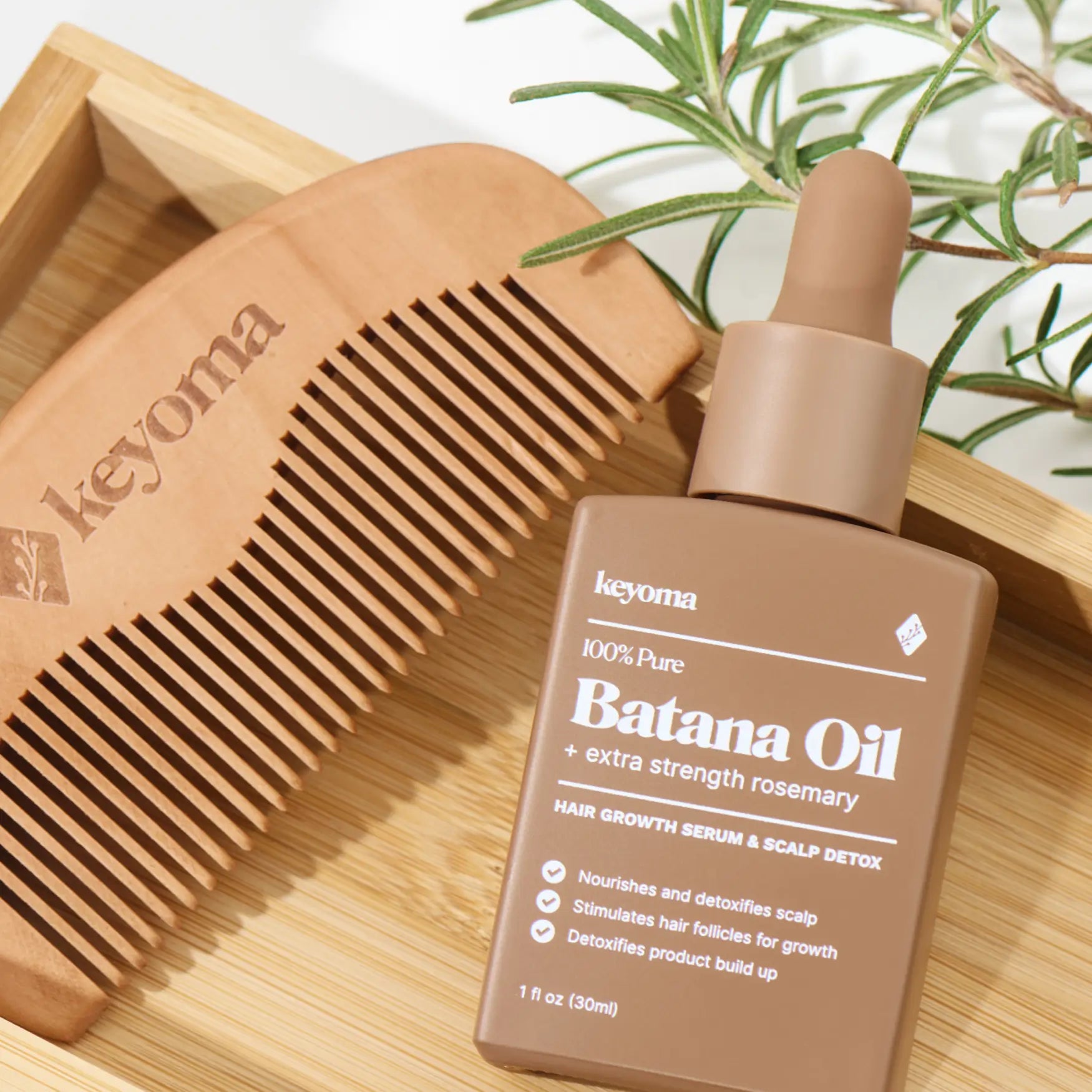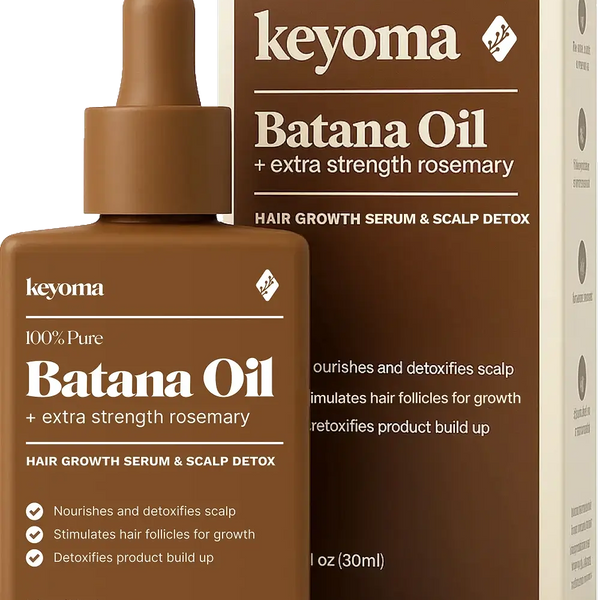In this article
No matter your hair type, everyday wear can chip away at hair health from hot tools, sun, hard water, and more. Damage changes the structure of your strands, but you don’t need lab gear to spot it; you just need to notice the clues.
So how can you tell if your hair is damaged? Some signs show up in the mirror, while others you’ll feel the moment you run your fingers through your hair.
Once you learn the signals, the next step is action. You can treat stressed, unhealthy hair with the right hair repair products, and the sooner you start, the better. Keep reading for what to look for and what to do next.
Key Takeaways
-
Damaged hair can show cracked cuticles, poor moisture retention, and frizzy, dry appearance.
-
Common causes include chemical processing, frequent heat, UV exposure, hard water, and friction.
-
Signs include brittleness, breakage or shedding, easy tangling, dullness, and poor product results.
-
Care strategies include deep conditioning, protein masks, trims, reduced heat, detanglers, and low-friction fabrics.
What Is Damaged Hair?
The cuticle is the outer shield that covers each strand and protects the cortex inside. When hair is damaged, parts of that cuticle become cracked or stripped away. Under a microscope, healthy hair looks like neat shingles on a rope, while damaged hair shows raised, uneven “scales” that leave the cortex exposed to stressors.
This matters because a compromised cuticle can’t protect the shaft. Damaged hair struggles to hold moisture, is harder to manage, and often looks frizzy, dry, and dull.
5 Signs of Damaged Hair

1. Dry, Brittle Texture
Yes, that dry, brittle feel is a classic sign. It lacks natural shine, stays parched, and gets tougher to style. Hair can dry out for many reasons, including heat damage, bleach, or even genetics.
Once brittleness sets in, more issues often follow, like breakage, split ends, flyaways, and dullness. The upside: you can rehydrate dry hair with nutrient-rich shampoos, deep conditioners, and salon smoothing or renewing services.
2. Breakage and Excess Shedding
Are strands snapping or splitting more than usual? Seeing extra shedding? A few splits are normal when you need a trim, but lots of snapping means hair has reached a breaking point.
Heat styling and lighteners can be part of the cause; both are workable if you protect the hair’s integrity. You can’t undo a broken fiber, but you can shield fragile areas with smarter products and gentler techniques.
3. Frequent Tangles and Knots
Tangles happen, especially after washing, but you shouldn’t spend endless minutes teasing out knots. If knots keep multiplying, your hair likely needs deeper nourishment.
Dry, fine, or frizzy strands catch more easily, so treat it as a damage sign. Follow the dry-hair tips and detangle slowly so you don’t add extra breakage; a gentle approach leads to smoother hair.
4. Dull or Brassy Appearance
Dullness often shows up when hair lacks moisture and key nutrients. Brassiness may come from fading pigments, but too much sun or heat can also play a role. In-salon glazing or glossing can revive shine, and updating your at-home routine helps prevent dullness from creeping back.
5. Products Seem Less Effective on Damaged Hair
If every mask or oil seems useless, you may be dealing with highly porous hair. Damage creates gaps in the cuticle, allowing moisture in and, more importantly, out again.
Nourishing ingredients can escape through those gaps, so results fall short. Watch how your hair responds to hydration; if it still feels empty, you’ll need strategies that lock in moisture and protect against future wear.
Common Causes of Damaged Hair
Knowing the causes is the first move in prevention. When you pinpoint what’s making hair weak, brittle, or dull, you can protect your strands and reduce shedding from stress.
Common culprits include:
-
Chemical treatments: Hair dye, bleach, perms, and relaxers weaken the structure and raise the risk of breakage.
-
Heat styling: Frequent heat styling with straighteners, curling irons, and blow dryers strips moisture, leading to dryness and split ends.
-
Environmental stressors: UV exposure and air pollution can degrade hair proteins and fade color.
-
Hormonal imbalances: Shifts in hormones can affect hair health, causing dryness, thinning, or extra shedding.
-
Hard water: Mineral buildup weighs hair down and makes it more likely to break.
-
Chlorine exposure: Pool water strips natural oils, leaving hair dry and brittle.
-
Poor nutrition and dehydration: Lacking essential nutrients or adequate water intake can weaken hair, making it dull and fragile.
-
Friction and tension: Tight styles, rough towel-drying, and certain pillowcases spark tangles, knots, and frizz.
-
Brushing mistakes: Brushing wet hair or over-brushing can overstretch and harm the fiber.
How to Treat Damaged Hair
Here’s the good news: if the damage isn’t severe, you can improve it. Use what you’ve learned about your hair to rebuild strength and prevent new problems.

If you’ve tried many options and hair still feels rough, a cut or trim may be the reset you need. You can start fresh and protect new growth from day one.
Try these options to get moving:
1. Use a Deep-Conditioning Mask
Make deep conditioning a regular habit to move hair toward a healthier state. A weekly hair mask is an easy place to start.
Hair masks and protein treatments supply the vitamins and nutrients your hair needs while it repairs. I noticed weekly masks made detangling quicker by week three. With steady use, you’ll usually feel softer, more manageable, stronger hair over time.
Be patient; progress takes time. It may be months before you see big changes. Keep hair moisturized and conditioned to lower breakage as it grows.
Hair Mask is a strong choice for deep conditioning. Its hydrolyzed rice protein boosts flexibility and tensile strength to support repair from within.
2. Avoid Constant Ponytails and Tight Styles
We love a sleek updo, but daily pulling, tugging, and elastic bands can cause breakage when used nonstop.
Choose styles that need little upkeep. Let your hair air-dry, style with your fingers when possible, and save elaborate looks for special events. Use leave-ins and treatments so your hair stays strong while you keep styling simple.
3. Trim Split or Frayed Ends
Keep ends fresh with regular trims, and cut away damaged, frayed, split, or uneven tips to reset the shape.
Split ends dull hair and invite more breakage. Heavily damaged hair may need more than a dusting, while lightly damaged ends often bounce back after a trim.
Schedule trims every few weeks or whenever you notice new splits.
4. Always Use a Heat Protectant
Most of us push tools too far at times, and the result is heat damage.
Use a heat protectant whenever you straighten, curl, or blow-dry. Keep temperatures low to avoid cooking moisture out of your hair.
Pick a protectant that hydrates while it guards the fiber; you’ll reduce breakage while you style.
5. Limit Hot Tools for a While
Even with products, hair can’t rebound if you keep applying high heat. After heat damage, give follicles a rest for 1–2 months before you bring tools back.
Use gentle products and low-maintenance styles while you pause. When you resume, limit hot tools to a few sessions per week.
6. Use a Detangler to Reduce Breakage
When moisture is low, knots form quickly, and yanking through them guarantees more splits and brittle ends.
Finger-comb whenever possible and avoid rough surfaces that add friction.
After washing, use a detangler with good “slip” so you glide through knots. Wrap hair in a microfiber towel to prevent rubbing against abrasive fabrics.
7. Sleep on Silk and Dry With a Microfiber Towel
Reduce friction wherever you can. Sleep on silk pillowcases and dry with microfiber towels to keep hair off rough textiles.
Silk helps hair retain product moisture and natural oils while lowering the pulling that leads to tangles and breakage.
Repair Your Damaged Hair with Keyoma
Treat roughness like a friction issue first. For two weeks, switch to finger detangling, a microfiber towel, and a silk pillowcase to cut snags. If masks and oils keep underperforming, assume high porosity and change the strategy, not the dose: use a weekly protein mask with hydrolyzed rice protein, then seal on damp hair so moisture lasts longer.
Pause hot tools for 4–8 weeks to slow fresh breakage, and keep up with trims so splits don’t travel. These small swaps can shorten detangling time and reduce shed from tugging. Finish repair days by sealing with Keyoma batana oil with rosemary on damp mids and ends.
Featured Product
100% Pure Batana Oil + Rosemary









